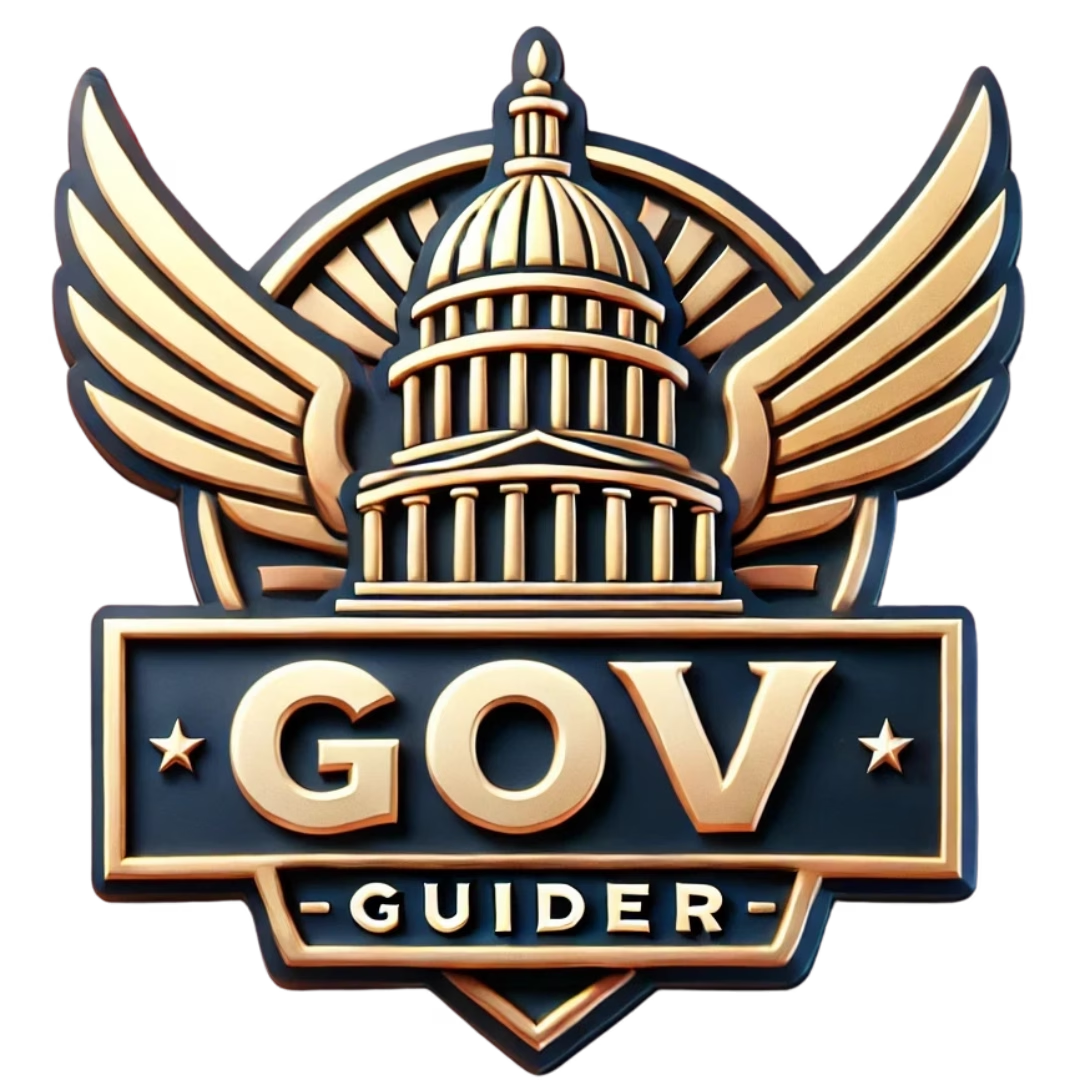Key Takeaways
- Understand government assistance programs like SNAP and TANF, which provide essential financial support to low-income individuals and families.
- Non-government sites serve as valuable resources, helping users navigate government assistance and find applicable grants.
- Eligibility for assistance is determined by factors such as income level, household size, and specific needs, making it crucial to understand your situation.
- Explore non-government grants for education, business, and community projects that may offer more flexible requirements compared to government-funded options.
- Accessing government cash assistance can significantly alleviate financial burdens, providing crucial support during economic hardships.
In today’s complex financial landscape, understanding government assistance and the role of non-government sites is crucial for individuals seeking support. This article will guide you through the intricacies of programs like SNAP and various grants, shedding light on what constitutes government financial assistance and how non-government sites contribute to these initiatives. We will explore key topics, including the eligibility criteria for assistance programs, the availability of cash assistance, and the significance of non-government grants. Additionally, we will address common questions such as, Is SNAP part of the federal government? and Are there non-government grants? By the end of this article, you will have a comprehensive understanding of your options and how to navigate the landscape of financial support effectively.
Understanding Government Assistance and Non-Government Sites
Is the SNAP program a non-government site?
The Supplemental Nutrition Assistance Program (SNAP) is a federal assistance program designed to provide nutrition benefits to low-income individuals and families. It is not a non-government site; rather, it is administered by the United States Department of Agriculture (USDA) through its Food and Nutrition Service (FNS). SNAP benefits can be used at authorized retail stores to purchase food items, ensuring that eligible participants have access to nutritious food options.
The program operates at both the federal and state levels, with state agencies responsible for the administration and distribution of benefits. This means that while SNAP is a federal program, its implementation and management are localized, allowing for tailored support based on community needs. For more detailed information about SNAP, including eligibility requirements and application processes, you can visit the official U.S. government website or consult resources from state agencies that manage SNAP in your area.
What is government financial assistance?
Government financial assistance refers to various programs and services provided by federal, state, and local governments to support individuals and families in need. This assistance can take many forms, including cash payments, food assistance, housing support, and healthcare services. The primary goal of government assistance is to alleviate poverty and provide a safety net for those facing financial hardships.
Programs like SNAP, Temporary Assistance for Needy Families (TANF), and housing vouchers are examples of government assistance designed to help low-income individuals and families meet their basic needs. Understanding government assistance is crucial for those seeking support, as it can provide essential resources during challenging times. For more insights on the types of government assistance available, you can explore understanding government assistance and its various benefits.
Exploring Government Assistance Programs
What is the $7,000 government grant for individuals?
The $7,000 government grant is primarily designed to assist low-income undergraduate students in covering essential educational expenses, including tuition, fees, and other school-related costs. This grant aims to alleviate the financial burden on students, enabling them to focus on their studies without the stress of financial constraints.
Eligibility Criteria:
- Financial Need: Applicants must demonstrate financial need, typically assessed through the Free Application for Federal Student Aid (FAFSA).
- Enrollment Status: Must be enrolled or accepted for enrollment in an eligible degree or certificate program at a recognized institution.
- Citizenship: Generally, applicants must be U.S. citizens or eligible non-citizens.
Application Process:
- Complete FAFSA: The first step is to fill out the FAFSA, which determines your eligibility for federal financial aid, including grants.
- Review Award Letter: After submitting the FAFSA, students will receive an award letter from their school detailing the types and amounts of aid they qualify for.
- Accept the Grant: If awarded the $7,000 grant, students must formally accept it through their institution’s financial aid office.
For detailed guidance on the application process and eligibility requirements, students can visit the U.S. Department of Education’s website or consult financial aid offices at their educational institutions. Additional support and resources can be found through platforms like Gov Guider, which provide comprehensive information on government grants and financial aid options.
Government cash assistance programs available today
Government cash assistance programs are designed to provide financial support to individuals and families in need. These programs aim to alleviate poverty and help recipients meet basic living expenses. Some of the most common government cash assistance programs include:
- Temporary Assistance for Needy Families (TANF): Offers financial assistance and support services to low-income families with children.
- Supplemental Security Income (SSI): Provides cash assistance to elderly, blind, or disabled individuals who have limited income and resources.
- General Assistance (GA): Varies by state, offering cash aid to individuals who do not qualify for other assistance programs.
To learn more about specific programs and eligibility requirements, you can visit the Benefits.gov website, which serves as a comprehensive resource for government assistance programs. Additionally, exploring Gov Guider can provide insights into understanding government assistance and welfare benefits.
The Role of Non-Government Sites in Assistance Programs
Non-government sites play a vital role in providing information and resources related to government assistance programs. These platforms often serve as a bridge, helping individuals navigate the complexities of available aid and ensuring they can access the support they need. Understanding how these non-government sites operate and the services they offer can empower users to make informed decisions about their financial assistance options.
Are There Non-Government Grants?
Yes, there are non-government grants available for individuals seeking financial assistance. These grants are typically offered by private organizations, foundations, and non-profits, aiming to support various causes such as education, housing, and community development. Unlike government-funded assistance, which is often tied to specific eligibility criteria and application processes, non-government grants may have more flexible requirements.
- Types of Non-Government Grants: These can include scholarships for education, grants for small businesses, and funding for community projects.
- Application Process: The application process for non-government grants varies widely. It’s essential to research each grant’s specific requirements and deadlines.
- Resources: Websites like Benefits.gov provide information on various grants, including non-government options, helping users find the right fit for their needs.
Service Assistance: A Non-Government Site – What You Need to Know
Service assistance through non-government sites can be an invaluable resource for individuals seeking help with government assistance programs. These platforms often provide comprehensive guides, FAQs, and step-by-step tutorials to help users understand their options and navigate the application processes.
- Types of Services Offered: Non-government sites may offer legal aid resources, financial counseling, and assistance with completing government applications.
- Benefits of Using Non-Government Sites: These sites can simplify complex information, making it easier for individuals to access the support they need. They often feature user-friendly interfaces and provide personalized assistance.
- Examples of Non-Government Sites: Platforms like NASWA and USA.gov can help users find relevant resources and information about government assistance.
Federal Government and SNAP
Is SNAP part of the federal government?
Yes, the Supplemental Nutrition Assistance Program (SNAP) is a federal government initiative designed to provide food assistance to low-income individuals and families. Managed by the U.S. Department of Agriculture (USDA), SNAP offers benefits that can be used to purchase food at authorized retailers. This program plays a crucial role in alleviating hunger and improving nutrition among eligible participants. Understanding how SNAP operates within the framework of government assistance is essential for those seeking support.
Understanding government as a service in relation to SNAP
Government as a service refers to the various ways in which government entities provide assistance and resources to the public. In the context of SNAP, this service is vital for ensuring that individuals and families have access to necessary food resources. The program not only helps to meet immediate nutritional needs but also contributes to the overall well-being of communities by reducing food insecurity. By leveraging government resources, SNAP exemplifies how government assistance can effectively support citizens in need.
Eligibility for Government Assistance
Determining your eligibility for government assistance can be a crucial step in accessing the support you need. Various programs exist to help individuals and families, but understanding the specific requirements is essential. Here, we will explore the criteria for qualifying for government assistance and delve into the specifics of the $540 a month government assistance program.
Do I qualify for any government assistance?
To find out if you qualify for government assistance, consider the following factors:
- Income Level: Most government assistance programs have income thresholds that applicants must meet. Generally, your household income should fall below a certain percentage of the federal poverty level.
- Household Size: The number of people in your household can affect your eligibility. Larger households may have higher income limits.
- Residency: You must be a resident of the state where you are applying for assistance. Each state may have different programs and requirements.
- Specific Needs: Some programs target specific groups, such as seniors, veterans, or individuals with disabilities. Understanding your unique situation can help identify the right assistance.
For more detailed information on eligibility requirements for various programs, you can visit Benefits.gov, which provides comprehensive resources on government assistance.
$540 a month government assistance: Who qualifies?
The $540 a month government assistance program is designed to provide financial support to eligible individuals and families facing economic hardship. To qualify for this assistance, applicants typically need to meet the following criteria:
- Income Limits: Your monthly income must be below a specified threshold, which varies by state and household size.
- Employment Status: Some programs may require you to be actively seeking employment or participating in job training programs.
- Documentation: You will need to provide documentation of your income, residency, and any other relevant information to verify your eligibility.
For those interested in exploring financial aid options further, I recommend checking out government funding programs that may offer additional support tailored to your needs.
Financial Support Options
What is government-funded assistance?
Government-funded assistance refers to various programs and services designed to provide financial support to individuals and families in need. This type of assistance can include cash benefits, food assistance, housing support, and healthcare services. Programs such as the Supplemental Nutrition Assistance Program (SNAP) and Temporary Assistance for Needy Families (TANF) are examples of government assistance aimed at alleviating poverty and improving the quality of life for eligible participants. Understanding what is government financial assistance is crucial for those seeking help, as it can significantly impact their financial stability.
Free grant money for bills and personal use: How to access it
Accessing free grant money for bills and personal use can be a vital resource for individuals facing financial hardships. Various government assistance programs provide grants that do not require repayment, making them an attractive option for those in need. To access these funds, individuals can start by visiting Benefits.gov, where they can find information on available grants and eligibility requirements. Additionally, local government websites often list state-specific government aid options, which can be beneficial for those looking for targeted assistance. For example, exploring government assistance by state can help identify programs tailored to specific needs.
Conclusion: Navigating Your Options
Can the government accept free services?
Yes, the government can accept free services, particularly in the context of community support and volunteer initiatives. Many government programs collaborate with non-government organizations to provide essential services without direct costs to the beneficiaries. For instance, local health departments often partner with non-profit organizations to offer free health screenings or educational workshops. These collaborations enhance the reach of government assistance programs and ensure that vital services are accessible to those in need.
Understanding the future of government assistance programs
The future of government assistance programs is likely to evolve in response to changing economic conditions and societal needs. As the demand for government assistance continues to grow, there may be an increased focus on integrating technology to streamline application processes and improve service delivery. Programs like Benefits.gov are already paving the way for easier access to information about government assistance. Additionally, the role of non-government sites in providing information and resources will remain crucial as they help individuals navigate the complexities of government aid. With ongoing discussions about the adequacy of current assistance levels, we can expect potential reforms aimed at expanding eligibility and increasing funding for essential services, ensuring that government assistance remains a vital resource for those who need it most.




